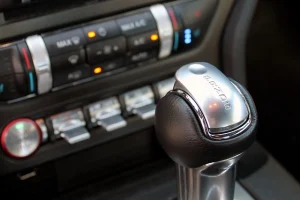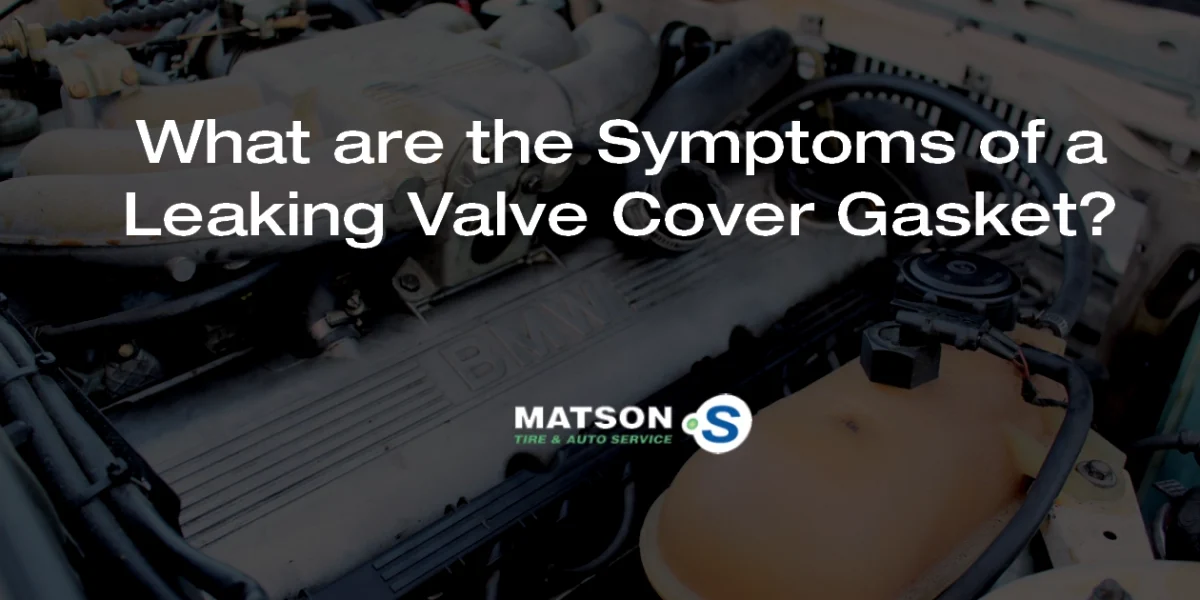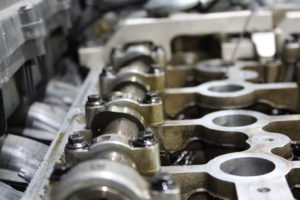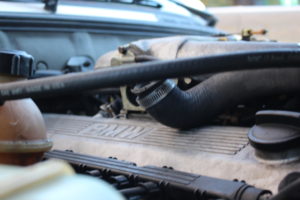Transmission fluid, and maintenance, are overlooked. Other fluids in your vehicle, like oil and brake fluid, get all the attention and as a result, get serviced more regularly. Transmission fluid is just as essential to the health and usability of your car or truck.
It’s not uncommon for car owners to completely ignore transmission fluid services. While it is true that transmission fluid does not need to be changed nearly as often as engine oil or brake fluid, neglecting it for too long can result in some expensive repairs.
Outside the recommended intervals, there are some things to keep an eye out for that might indicate it’s time to get some fresh fluid in your vehicle’s transmission. Keep on reading to learn about some common symptoms of bad/old trans fluid!

What is Transmission Fluid?
Transmission fluid lives inside the case of the transmission, much like oil lives inside the engine. Transmission fluid varies depending on the vehicle, manufacturer, and type of gearbox.
Automatic transmissions use a fluid referred to as ATF. Older manual transmission cars utilize a heavier-weight gear lube, but some modern manuals use an ATF as well.
Other technologies like CVT (continuously variable transmission) or DCT (dual-clutch transmission) use highly specialized fluids. There is no standard rule for what transmission fluid to use. You should always consult your owner’s manual or ask your service advisor.
What Does Transmission Fluid Do?
Transmissions have loads of moving metal parts. Without a lubricant, these parts would grind against each other and wear down extremely quickly, generating immense amounts of heat. In all cases, transmission fluid keeps the gearbox lubricated and cool.
ATF also acts as a hydraulic fluid, and assists in gear changes. The pressure and friction created by the hydraulic fluid make switching gears much easier.
The final purpose is cooling. The fluid absorbs heat from the transmission as it circulates through the system. Eventually, the fluid reaches the transmission cooler, which cools it and in turn, the transmission. This process happens over and over to ensure the proper temperature for your transmission.
How Often Should You Change Your Transmission Fluid
The period between changes varies heavily depending on the make and model. Some modern cars use a lifelong transmission fluid that according to the manufacturer, never needs to be changed. While this fluid will last a long time, it’s still vital to check and change it if needed, especially if using the vehicle for any hard driving or towing.
For cars with fluid that needs to be changed, the intervals can vary. In general, service intervals can range from anywhere between 30,000-100,000 miles. You should periodically check your transmission fluid for contamination if you allow it to run close to the recommended maximum mileage. More frequent fluid changes are recommended for higher mileage vehicles.
Symptoms of Old Transmission Fluid
Neglecting to flush your transmission regularly can lead to some pretty noticeable symptoms.
Dirty Transmission Fluid
One of the easiest ways to see if you should replace your fluid is to look at it. Contaminated or old transmission fluid will be a dark brown or black color. The darker the fluid, the more critical it is that you replace it. The fluid may also have a burnt smell.
ATF fluid is red when new, and will become a darker red as it’s used in the transmission. These colors are normal and signify fluid that’s still okay to run in your vehicle.
Manual transmission fluid for older manuals is golden/amber in color, similar to motor oil. It will also become darker and dirtier with age.
Engine Running Hot
It may be counterintuitive to think that your engine would be reaching high temperatures due to your transmission, but it’s possible! When the transmission fluid can’t flow as it should, the gearbox is unable to cool itself. The transmission will build up excess heat through friction if the fluid is not lubricating like it should, and since it’s connected to the engine, will transfer the heat to it. While there are many other reasons your engine could be running hot that should be looked at first, it may be worth checking your transmission fluid.
Grinding Transmission
When transmission fluid degrades and becomes contaminated, it loses its lubricating properties. Moving parts will start to grind against each other and can cause some very unnerving noises. If you hear any similar noises, it may be time for a transmission fluid change.
Transmission Slipping
As transmission fluid becomes worn out, it can impact how your transmission shifts. A reduction in hydraulic pressure causes the transmission to struggle when holding the car in a certain gear and can allow the transmission to slip back into another gear. Slipping can be a symptom of more severe mechanical issues, but in some situations changing the transmission fluid will help.
Surging Transmission
If your vehicle “surges” or jolts forward every so often, it may be a product of old and dirty transmission fluid. Similar to when gears slip, the fluid isn’t able to flow at the rate it needs to which causes it to get stuck at certain points. This causes inconsistency in the power delivery and occasional surges that send your car lurching forward.
Transmission Fluid Service at Matson Point S
If you’re experiencing any symptoms similar to these, it’s best to bring your vehicle to a professional to service it. Driving with old transmission fluid can be harmful to your car’s health in the long run, and catching issues early can save you a lot of money.
Luckily, Matson Point S in Riverton, Utah is your resource for transmission service and fluid changes. Our experienced technicians will ensure your transmission is healthy. Call or schedule online today to meet with our friendly team!









